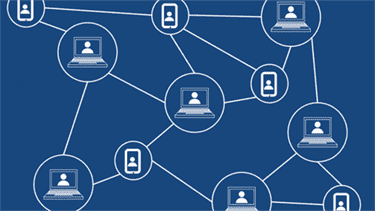And the lack of shared purposes undermines the very nature of group effort. In this cycle, every element directly impacts the element after and is impacted by the element coming before. The seven strategies above help take the group through team formation phases and help them grow. Each stage has its https://www.globalcloudteam.com/ particular obstacles and things to learn from. Ensure you have proper communication and collaboration tools to promote open discussion and build a culture of trust. When group leaders support team members accordingly, soon enough, you will see how personal and collective performance increases.
Create a weekly work plan with tasks and share it with the team. Throwing a group of talented people together doesn’t mean that they will form a great team. Hoping that your company or project will be a success won’t make it happen. Members might disagree over how to complete a task or voice their concerns if they feel that someone isn’t pulling their weight. They may even question the authority or guidance of group leaders.
Module 8: Groups, Teams, and Teamwork
I assembled a list of quick tips of my own and advice from experts that will help managers, leaders, and teams ensure that each stage plays out as it should. They recently released the app and received plenty of positive feedback for the design and implementation. To make things more tangible, here’s a quick overview of the behaviors, feelings, group needs, and leadership needs in the Performing Stage. Interestingly, the 5 stages of group development model can even be useful in the theater. Yet, this model was initially known as the “Forming-Storming-Norming-Performing Model.” Experts often refer to this original model as the 4 stages of group development. In fact, your team could consist of the best talent in the world.

These social connections are especially important right now, as more of us work from home. Schedule regular reviews of where your team is at and adjust your behavior and leadership approach. One of those rules can be to remember to always listen to one another. No question is stupid, no idea is too silly to bring up, and no one is too “senior” to ask for help. At the end of the day, you’re all working towards a common goal, to get there, you need a foundation built on listening to what the others on the team have to say.
Team Building
You’ll know when it happens because your team will drive each other to work harder and better. As a manager, you want to empower the team to handle dissent and set goals as they need to. Because the forming stage happens when the team is new and unfamiliar with each other, the focus is on facilitating communication.

It is the moment when group members shift the focus from interpersonal aspects to team effectiveness. The line between individual and collective performance narrows down with the performing stage. Because a work team is a common arrangement within today’s business organizations, managers need to understand group behavior and team concepts. Managers must also decide on team size and member roles to gain the maximum contribution from all members. Generally, when organizations form teams, these organizations have specific projects or goals in mind. By following the five stages of team development, teams are able to maximize their potential and produce better results in a shorter amount of time.
Storming: navigating conflict to reach unity
Your team needs to communicate clearly and, rely on one another rather than turn on each other. This is a crucial point in team development where leaders can pinpoint bottlenecks, areas of improvement and couple them with team strengths to build forward momentum. It’s the time where your team learns about upcoming projects and structures.
- When we start a new job, work with a new client, or meet new people, it can be tough to adapt to the dynamics of a group.
- Differences among members are appreciated and used to enhance the team’s performance.
- During the adjourning phase, focus on the supportive leadership style to make sure everyone on the team feels valued.
- The 5 stages of team development created by Bruce Tuckman almost six decades ago serve precisely that purpose.
Google MeetUse Fellow’s Google Meet extension to collaborate on meeting notes and record action items, right within your video calls. Team MeetingsCollaborate on meeting agendas, take notes in real-time, and end every team meeting with an action plan. AnalyticsGain insight about your company’s meeting frequency, productivity, and feedback culture. StreamsStreams are digital notepads to help you organize projects, share OKRs, and whatever else you dream up. Explore Agency Life and learn how to scale your agency, straight from agency leaders. Creating a closing celebration that acknowledges the contributions of individuals and the accomplishments of the team and that formally ends this particular team’s existence.
Stage #4 — The Performing Stage
But she said that we should try to be open to whatever’s coming our way. As a natural consequence of it all, your project is bound to progress at a steady rate. In contrast, mismatched, uncompromising teams can only produce incomplete, confusing projects — if they produce anything at all.

On a remote team, you need to be more thoughtful about the tools and the processes that you use to identify and deal with disagreements. Project scheduling is a critical and crucial part of project management and planning. It’s the yellow-brick-road that, when followed, will lead you to the gleaming project closure right on time. Some teams do come to an end, when their work is completed or when the organization’s needs change. While not part of Tuckman’s original model, it is important for any team to pay attention to the end or termination process. End each meeting with insightful and constructive feedback that improves the group process.
useful online tools for workshop planning and meeting facilitation
In fact, each phase plays a critical role in the team’s progress — whether in short, medium, or long-term goals. That’s where Tuckman’s stages of group development yield immense results. The leader facilitates this process and encourages ongoing conversations around team norms. As the team progresses to the performing stage, https://www.globalcloudteam.com/four-stages-of-team-development-what-you-need-to-know/ they become more self-reliant, and the leader can observe and oversee from a distance, taking on a more effective leadership role over time. Effective team development involves recognizing the stages of team development and establishing clear norms, agreements, and communication practices to facilitate a smoother transition.

The adjourning stage can be difficult for team members who have become close. They must say goodbye to one another and may never see each other again. However, the adjourning stage can also be a time of celebration.
Scenario: You’re leading your team through the forming stage
Storming is characterized by competition and conflict within the team as members learn to bend and mold their feelings, ideas, attitudes, and beliefs to suit the team organization. Although conflicts may or may not surface as group issues, they do exist. Questions about who is responsible for what, what the rules are, what the reward system is, and what the evaluation criteria are arise.

